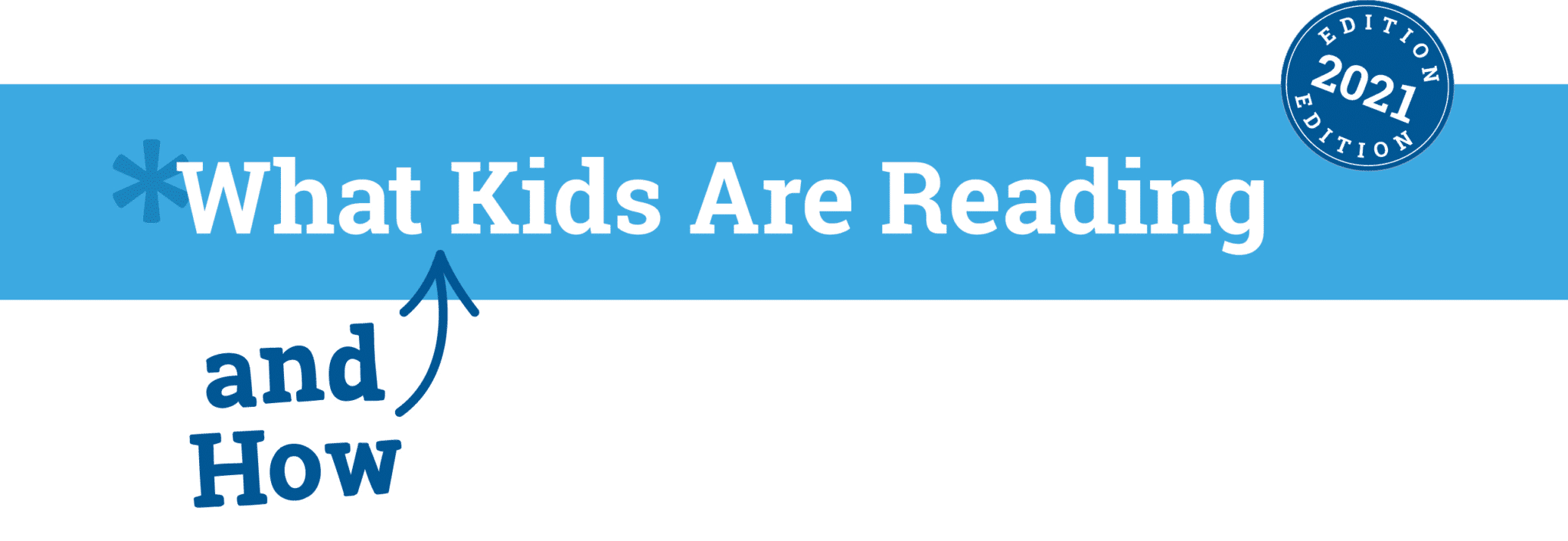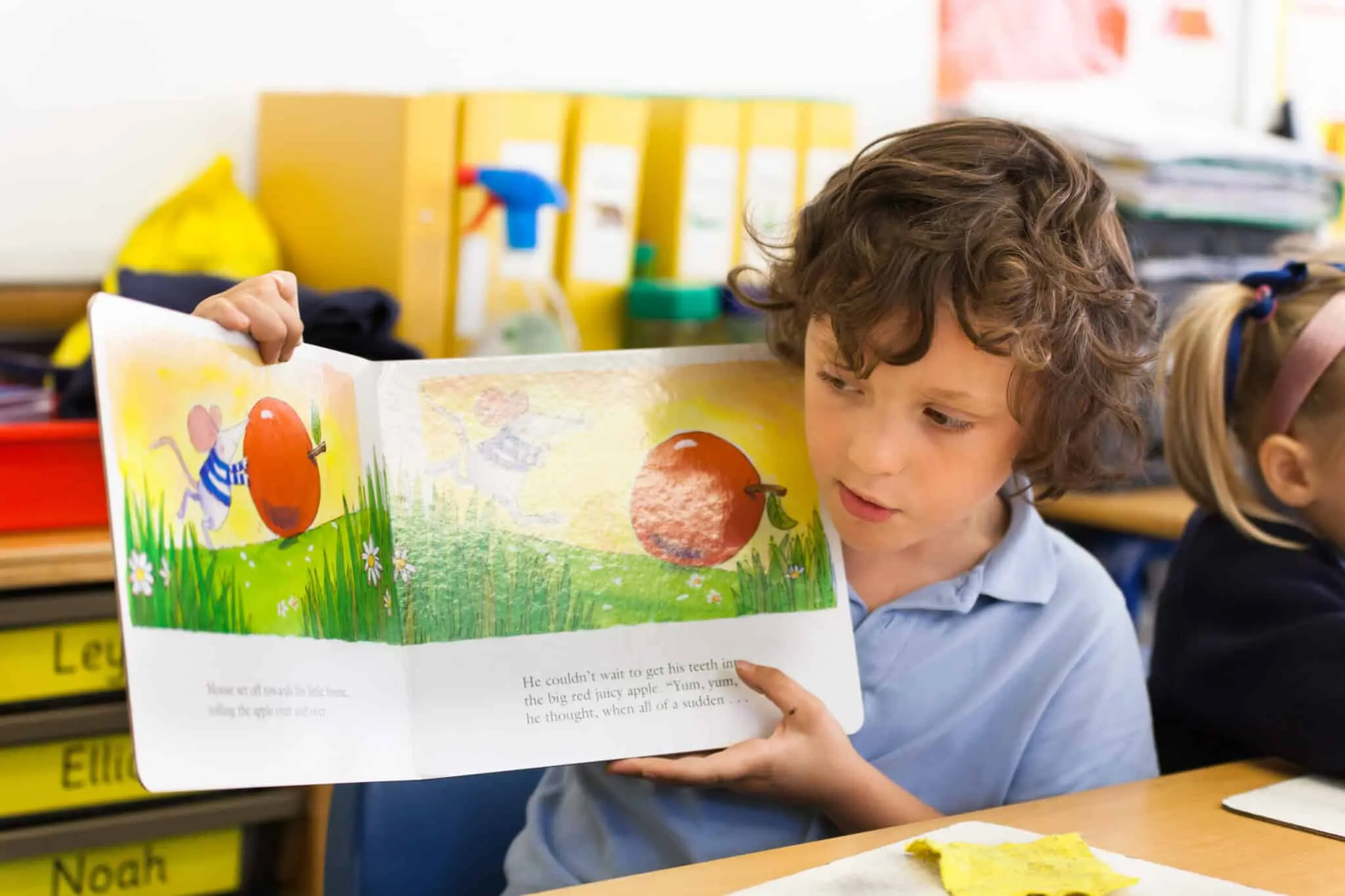April 28, 2021

Did you know that 2021 marks the 13th year of our What Kids Are Reading report? The report is the largest annual study of the reading habits and trends of students across the UK and Ireland – and it keeps getting bigger. This year, we looked at 1,146,353 pupils (that’s 1% more than last year) who read 19,662,147 books over the 2019-2020 academic year, with particular emphasis on the impact lockdown had on reading attitudes and attainment.
We’ve written this blog to highlight some of the key ideas and findings from the report. If you want to read more, click here to download your free copy.
We’d love to hear your thoughts about this year’s report. Tweet us using #WKAR21!
Happy birthday, Accelerated Reader!
2021 sees the 35th anniversary of the creation of Accelerated Reader (AR), our reading practice programme from which we pull much of the data used in the What Kids Are Reading report. AR records the books that children have actually read (and passed a comprehension quiz on) rather than books they’ve bought or borrowed from the library, and that’s one thing that makes the report so unique and exciting.
We’re so grateful to the schools that share their experience of the positive effect AR has on students of all ages and abilities, and we’ve highlighted some of these success stories throughout the report too.
Other data sources
As well as using data from Accelerated Reader, we’ve also looked at data from Star Reading and myON in this report. It also includes insights and comment from a selection of children’s authors – this year, you can hear from Piers Torday, Saadia Faruqi, Sav Akyüz and Joseph Elliott.
It was an unusual year…
It goes without saying that the 2019-2020 academic year was an unusual one, with the majority of pupils in the UK and Ireland learning from home for much of the year, and we thought it was essential to address that in this year’s report. We’re very grateful to the National Literacy Trust for helping us with some additional insight about how reading behaviour changed during the Covid-19 pandemic, and why this might be.
Quality and quantity
Our data shows that the total number of books read overall in the 2019-20 academic year actually dropped by 17% against 2018-19. But the good news is that during the period of school closures due to Covid-19, reading levels increased! And when children did read, they were picking up longer books, and more challenging books for their age, which they read with better comprehension. In particular, children in Year 7 and below improved their reading levels by reading more demanding texts.
Escaping into a book
The National Literacy Trust (NLT) found that reading for pleasure dipped at the beginning of 2020. In fact, at the start of last year, only 48% of children said they enjoyed reading – that’s the lowest since 2005!
But lockdown was, seemingly, good news for children’s reading. During school closures, many more children began to enjoy reading again! In fact, during the pandemic, 56% of young people said they enjoyed reading either very much (24%) or quite a lot (32%). And when it came to reading choices at that time, almost 70% of children said they had read more fiction, with most turning to adventure stories – the most popular fiction genre.
We all know that the lockdowns in 2020 were difficult – did you find that reading made you feel better? According to the NLT’s report, this was the case for young people too: three in five children said reading made them feel better during lockdown, and 32% also said reading helped them when they felt sad because they could not see friends or family.
Old favourites…
During the first lockdown, One of Us is Lying by Karen M. McManus topped the leaderboard as the favourite book of secondary school students, while Harry Potter and the Prisoner of Azkaban by J. K. Rowling was the favourite in primary schools.
We found that David Walliams and Julia Donaldson, both of whom are regular features in this section of the report, became more popular than ever! J. K. Rowling’s books came up a staggering 36 times, as more primary school pupils picked up the Harry Potter series. Suzanne Collins, author of The Hunger Games, also increased her popularity, while Roald Dahl sustained his. Interestingly, though, Jeff Kinney – author of the Wimpy Kid books – actually declined in popularity this year, and Roderick Hunt, author of the Oxford Reading Tree books, almost disappeared altogether.
The NLT’s data showed that during the pandemic, one in seven children had turned to a book they had read before – maybe a ‘comfort read’ to help distract them from what was happening in the world.
…and new ones
46% of children said they had read new books last year, which was great to see. Jill Murphy, author of The Worst Witch and the ‘Large Family’ picture books, was a new entrant on this year’s Favourite Books lists too.
Differences across countries
Looking at the four countries of the UK, plus Ireland, separately, some interesting differences appear. For example, compared to the other four UK regions, the quality of reading comprehension in Wales has improved slightly since last year, but book difficulty levels were generally lower.
In Northern Ireland, primary-age pupils read less difficult books than their Republic of Ireland neighbours. In Year 3, for example, Irish children were reading books two and half years above their chronological age! But the Northern Irish pupils quickly catch up, and these differences have levelled out by the time they reach secondary school.
Primary-age pupils in Scotland – Year 1 in particular – read a larger variety of books compared to their English counterparts. Year 2 children in Scotland read more difficult books than other Year 2 children: in fact, they were reading books almost two years ahead of their chronological age!
What do the experts think?
Professor Keith Topping, author of the What Kids Are Reading report:
“During the lockdown overall, pupils were tending to read longer books of greater difficulty and with greater comprehension. Having more time to read gave children the chance to immerse themselves in literature and schools should encourage more reading time now that they are open again.
“It is great to see that primary age children are reading more difficult books and this should be reflected at secondary school age where book difficulty this year plateaued. Secondary schools need to encourage their pupils to attack more difficult books.”
John Moore, Renaissance UK Director:
“Knowing that reading really helped younger children to feel better throughout the pandemic is very encouraging. It’s promising to see that when pupils had a choice of books to hand many chose a more challenging book, and one that perhaps allows for more escapism.
“At Renaissance we have long advocated for dedicated time to read, and for the importance of schools to encourage a love of reading among pupils; whether it’s a favourite author recommended by peers, a non-fictional book about a hobby they enjoy, or a timeless classic. This report highlights how important it is that everyone has access to books and what schools need to do to re-engage children with reading for enjoyment while giving them space and time to read more.”
Dr Christina Clark, Head of Research at the National Literacy Trust
“Our research into reading enjoyment indicates that having more time to read and the increased autonomy of book choice, along with the opportunity to read for its own sake, were key reasons why more young people are enjoying being immersed in stories. Half of the children agreed that at such a time as the lockdown, reading improved their wellbeing and encouraged them to dream about the future, offering a refuge for a source of calm, escapism and relaxation. Schools should be encouraging pupils to read to entertain a variety of purposes: not just for learning but for their wellbeing too.”
Find out more
The What Kids Are Reading report itself goes into detail about what children read in 2019-20, how their reading progressed, and how they felt about reading. Get all the information by downloading it for free here.
The What Kids Are Reading report summarises the reading habits from 1,146,353 pupils who read 19,662,147 books using data from Renaissance Accelerated Reader, Star Assessments, and myON.
The National Literacy Trust segment of the report, provided by Dr Christina Clark, Head of Research, and Irene Picton, Research Manager, is based on a survey of 58,346 pupils aged 9 to 18 in early 2020 and 4,141 pupils aged 9 to 18 in May-June 2020.
